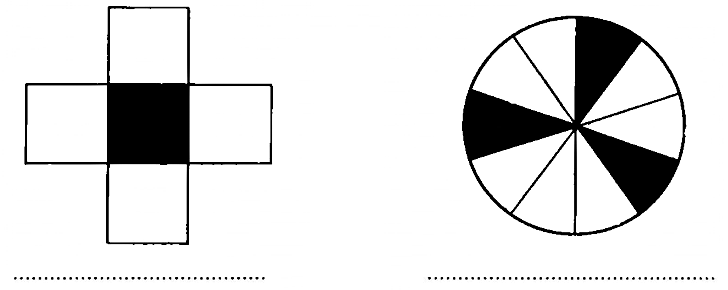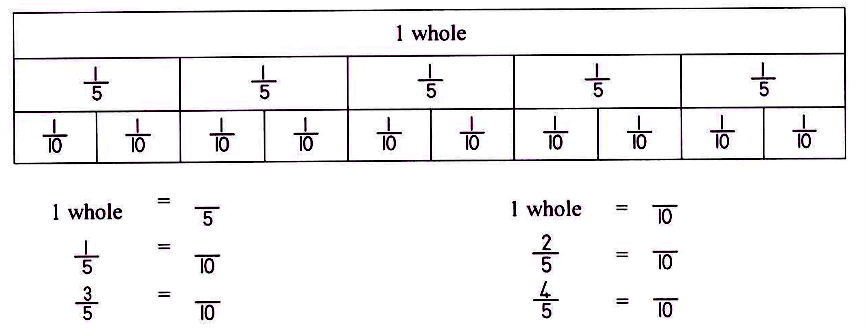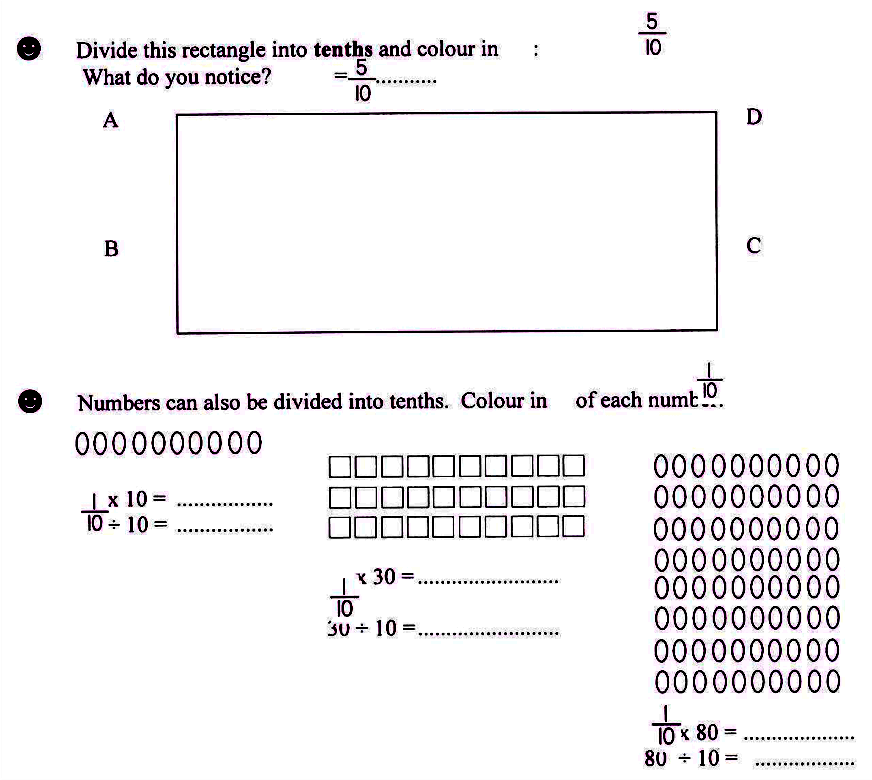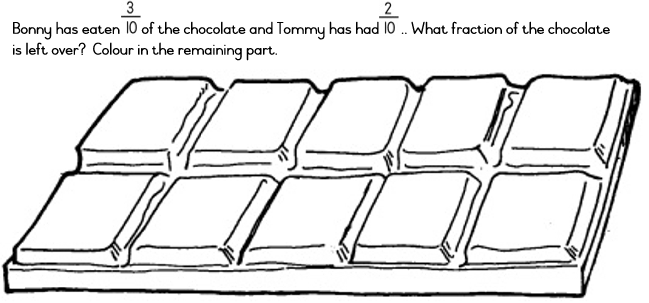| << Chapter < Page | Chapter >> Page > |
It might help them to draw the diagrams.
The decision to make use of carried numbers is left to the educator.
First supply paper shapes for dividing into tens, so that the learners may discover for themselves that tenths , like thirds and fifths, have to be calculated and measured. It is not simply a matter of folding and folding again as in the case of a ½ and a ¼ .
Guide them to discover that they, by first obtaining fifths , can divide each fifth down the middle to obtain tenths .
Discuss symmetrical shapes with the learners. Let them identify symmetrical objects in the classroom. They should complete the drawing after this exercise.

The rectangle is divided into __________ equal parts.
Each part is called a ____________.



| Tenths: | 1 | 2 | 3 | 4 | 5 | 6 | 7 | 8 | 9 | 10 |
| Number: | 9 |


| elephant | |||||||||||||||||||||||||||||
| lion | |||||||||||||||||||||||||||||
| cheetah | |||||||||||||||||||||||||||||
| rhinoceros | |||||||||||||||||||||||||||||
| buffalo | |||||||||||||||||||||||||||||
| Friends | 1 | 2 | 3 | 4 | 5 | 6 | 7 | 8 | 9 | 10 | 11 | 12 | 13 | 14 | 15 | 16 | 17 | 18 | 19 | 20 | 21 | 22 | 23 | 24 | 25 | 26 | 27 | 28 | 29 |
Learning Outcome 1: The learner will be able to recognise, describe and represent numbers and their relationships, and to count, estimate, calculate and check with competence and confidence in solving problems.
Assessment Standard 1.4: We know this when the learner orders, describes and compares numbers;
Learning Outcome 3: The learner will be able to describe and represent characteristics and relationships between two-dimensional shapes and three-dimensional objects in a variety of orientations and positions.
Assessment Standard 3.4: We know this when the learner determines lines of symmetry in two-dimensional shapes using paper folding and reflection;
Learning Outcome 5: The learner will be able to collect, summarise, display and critically analyse data in order to draw conclusions and make predictions, and to interpret and determine chance variation.
Assessment Standard 5.1: We know this when the learner collects data (alone and/or as a member of a group or team) in the classroom and school environment to answer questions posed by the teacher and class (e.g. ‘how many learners walk to school?’);
Assessment Standard 5.2: We know this when the learner sorts, orders and organises own and supplied data by one or more attributes for a particular reason. chosen by the teacher;
Assessment Standard 5.3: We know this when the learner draws pictures and constructs pictographs and bar graphs that have a 1-1 correspondence between own data and representation;
Assessment Standard 5.4: We know this when the learner reads, interprets and reports on information in own and a peer’s representations of data.

Notification Switch
Would you like to follow the 'Mathematics grade 3' conversation and receive update notifications?